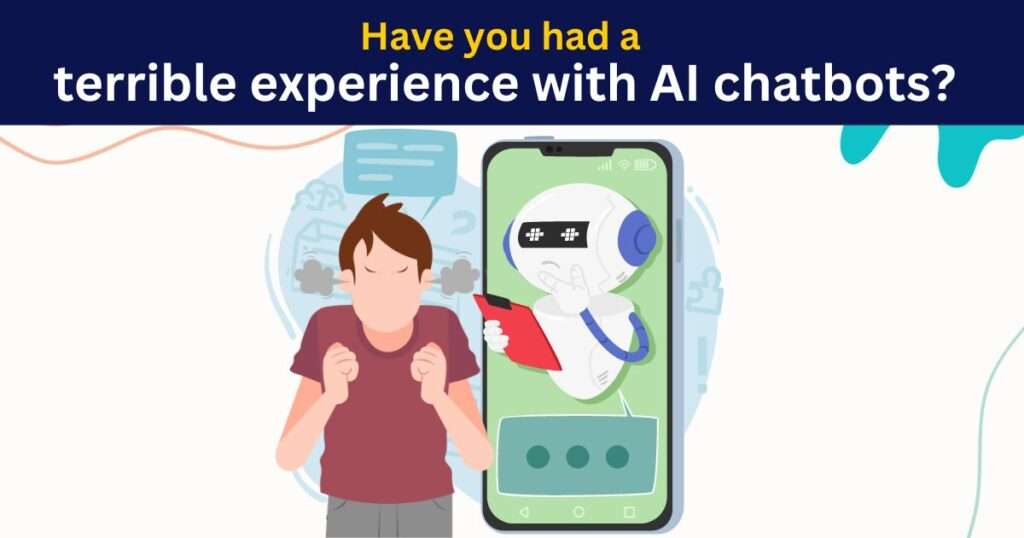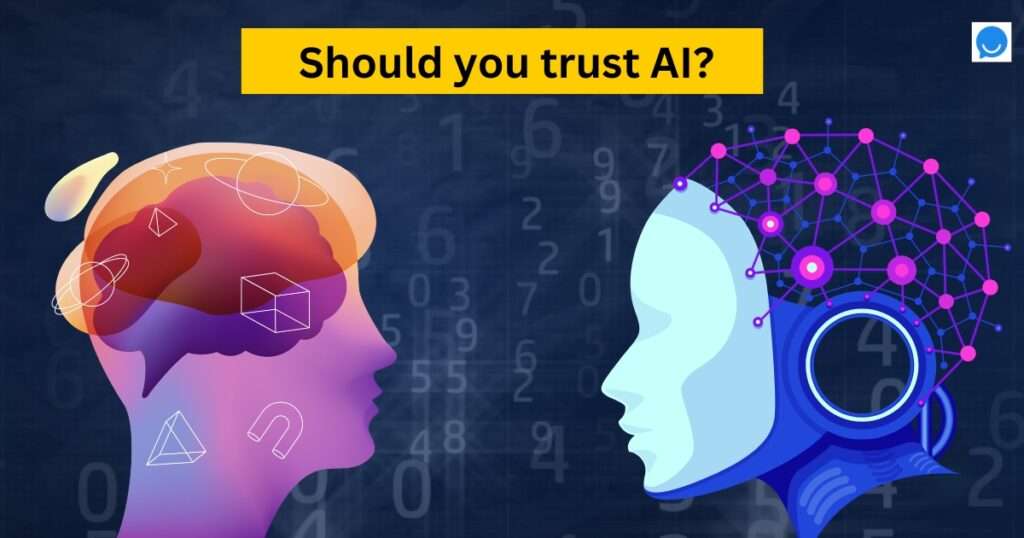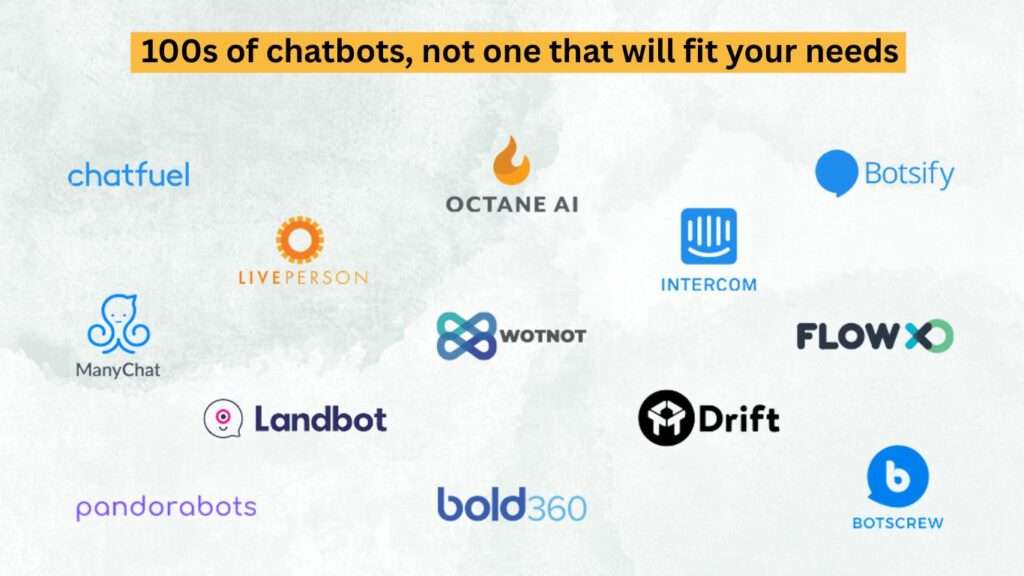I. Introduction
AI chatbots are everywhere today. They pop up on websites, help us with customer service, and even chat with us on our favourite apps. As technology advances, more and more businesses are using these chatbots to interact with their customers. This means that every day, millions of people are talking to AI chatbots, relying on them for help and information.
While AI chatbots can be really helpful, they are not perfect. Many people have had bad experiences with them. These bad experiences can be frustrating and annoying. In this discussion, we will look closely at the common problems people face when using AI chatbots. We will explore why these issues happen and how they affect users. Understanding these problems is the first step toward making chatbots better and more reliable for everyone.

II. Common Issues with AI Chatbots
A. Lack of Understanding:
Sometimes, AI chatbots just don’t understand what we’re trying to say. For example, if you ask a chatbot a question and it gives you a completely wrong answer, it’s because it didn’t comprehend your query. This can happen because the chatbot isn’t programmed well enough to understand all kinds of questions, especially if they are worded differently or are too complex.
B. Limited Functionality:
Many chatbots can only do a few simple things. If you ask them something outside of their programmed responses, they might not know how to help you. For instance, if a chatbot is only designed to answer questions about store hours but you ask it about product details, it might not be able to give you the information you need. This makes the interaction feel limited and unhelpful.
C. Poor User Experience:
Using some chatbots can be very frustrating. Sometimes they repeat the same answers over and over, even if it’s not what you need. Other times, they might give you irrelevant responses that have nothing to do with your question. This poor user experience can make it hard to get the help you need and leave you feeling annoyed and dissatisfied.
D. Technical Glitches:
Technical problems can also spoil your experience with AI chatbots. They might crash or freeze in the middle of a conversation, making it impossible to continue. Sometimes, they provide wrong or outdated information, which can be misleading. These glitches make chatbots unreliable and can make users lose trust in them.
The following article from Khoros has how has the AI chatbot failed.
III. Case Studies and Personal Anecdotes
A. Real-life Examples:
Many people have shared their frustrating experiences with AI chatbots. For instance, one person might have tried to get help with a billing issue, but the chatbot kept misunderstanding the problem and providing incorrect information. Another person might have asked for directions, only to receive irrelevant or confusing answers. These stories highlight how chatbots can sometimes fail to meet users’ needs, leaving them feeling frustrated and helpless.
B. Impact on Businesses:
When chatbots don’t work well, it can hurt businesses too. Customers who have bad experiences with chatbots may feel unhappy and take their business elsewhere. For example, if a customer can’t get the help they need from a chatbot on a shopping website, they might decide to shop on a different site instead. Poor chatbot performance can lead to negative reviews, lost sales, and a damaged reputation for the business.
C. Public Reactions:
Many people share their bad experiences with chatbots on social media and review sites. They post about how the chatbot didn’t understand them, gave wrong answers, or simply didn’t help at all. These public reactions can spread quickly, influencing other potential customers’ opinions. When many people share similar negative experiences, it highlights the widespread issues with AI chatbots and shows the need for improvements.
These examples and reactions help us understand the real impact of poorly performing AI chatbots on both individuals and businesses.
IV. Root Causes of Terrible Experiences
A. Inadequate Training Data:
One big reason chatbots don’t work well is because they are trained with limited or biased data. Training data is like the information chatbots learn from to understand and respond to users. If this data is not diverse or comprehensive enough, chatbots won’t know how to handle many different questions or situations. This leads to them giving wrong or unhelpful answers because they haven’t been taught properly.
B. Lack of Context Awareness:
Chatbots often struggle with understanding the context of a conversation. This means they can’t remember what was said earlier or understand the nuances of a situation. For example, if you ask a chatbot about your order status and then follow up with another related question, the chatbot might not connect the two and give you an unrelated answer. This lack of context awareness makes conversations with chatbots feel disjointed and frustrating.
C. Integration Issues:
Sometimes chatbots don’t work well because they aren’t properly connected with other systems and platforms. For instance, a customer service chatbot might not have access to the latest order information or customer records. This means it can’t provide accurate answers or help users effectively. Poor integration leads to incomplete or incorrect responses, making the chatbot seem unreliable.
D. Overpromising Capabilities:
Some chatbots are marketed as being able to do more than they actually can. Businesses might claim that their chatbot can handle complex queries or provide personalized assistance, but in reality, the chatbot might only handle basic questions. When users expect too much and the chatbot can’t deliver, it leads to disappointment and frustration. Misleading claims about chatbot capabilities set unrealistic expectations and ultimately harm user trust.
These root causes help explain why AI chatbots often fail to meet user expectations and highlight areas where improvements are needed.
V. Potential Solutions and Improvements
A. Better Training and Data:
To make chatbots smarter and more helpful, it’s important to use a wide range of training data. This means giving the chatbot access to lots of different types of questions and situations. When chatbots learn from diverse and comprehensive datasets, they can understand and respond to more people correctly. This helps them give better answers and makes them more reliable.
B. Contextual Understanding:
For chatbots to be more useful, they need to remember what was said earlier in a conversation and understand the context. This means developing chatbots that can keep track of previous interactions and provide answers that make sense in the flow of the conversation. By improving context retention and natural language understanding, chatbots can have more meaningful and helpful interactions with users.
C. User-Centric Design:
A good chatbot should be easy to use and designed with the user in mind. This means creating interfaces that are simple, clear, and intuitive. When chatbots are user-friendly, people find it easier to get the help they need. Designers should focus on making interactions smooth and enjoyable, ensuring that the chatbot meets the user’s needs effectively.
D. Continuous Improvement:
Chatbots should be regularly updated and improved based on user feedback. This means having a system in place to collect feedback from users about their experiences and using this information to make the chatbot better. Regular updates and enhancements can fix problems, add new features, and keep the chatbot up-to-date with the latest information. Continuous improvement ensures that chatbots stay relevant and useful over time.
By focusing on these solutions, we can make AI chatbots more effective, reliable, and user-friendly, leading to better experiences for everyone.
VI. Future of AI Chatbots
A. Technological Advancements:
As technology continues to advance, we can expect chatbots to become even smarter and more capable. New innovations, like better natural language processing and machine learning algorithms, will help chatbots understand and respond to users more accurately. Future chatbots might also be able to handle more complex tasks and provide more personalized assistance. These advancements will make chatbots more helpful and efficient in various situations.
B. Ethical Considerations:
As chatbots become more advanced, it’s important to ensure they are used ethically. This means protecting user privacy, avoiding bias in responses, and being transparent about how chatbots work. Businesses and developers need to build and use chatbots in ways that respect users’ rights and maintain their trust. Ethical considerations will be crucial in ensuring that chatbots are a positive force and do not harm or deceive users.
C. Industry Trends:
The use of AI chatbots is likely to grow across many industries. In customer service, chatbots will continue to handle common inquiries, allowing human agents to focus on more complex issues. In healthcare, chatbots might help with patient intake and provide medical information. In retail, chatbots can assist with shopping recommendations and order tracking. As industries recognize the benefits of chatbots, their roles will expand, leading to more widespread adoption and innovation.
By looking at these future trends and advancements, we can see that AI chatbots have a promising path ahead. Ensuring ethical use and staying up-to-date with technological improvements will be key to making chatbots more effective and beneficial for everyone.
VII. How BeyondChats Can Help
A. Advanced AI Capabilities:
BeyondChats uses the latest AI technology to make chatbots smarter and more responsive. This means that the chatbots can understand what users are asking more accurately and provide better, more relevant answers. By being more context-aware, BeyondChats chatbots can follow conversations more naturally and help users more effectively.
B. Comprehensive Training:
To ensure that chatbots can handle a wide range of questions and situations, BeyondChats uses diverse and extensive datasets for training. This means the chatbots learn from many different examples and scenarios, making them better at understanding and responding to users. Comprehensive training helps the chatbots provide accurate and helpful information to a variety of users.
C. Seamless Integration:
BeyondChats chatbots are designed to work smoothly with other systems and platforms. This means they can easily access up-to-date information and provide accurate responses without technical issues. By integrating well with existing systems, BeyondChats reduces the chance of errors and ensures that chatbots can help users efficiently.
D. User-Centric Design:
BeyondChats focuses on making chatbots easy and enjoyable to use. The interfaces are designed to be intuitive and user-friendly, so people can interact with the chatbots without frustration. By prioritizing user experience, BeyondChats ensures that chatbots meet the needs of users effectively and pleasantly.
E. Continuous Improvement:
BeyondChats regularly updates and improves its chatbots based on user feedback. This means that any problems or issues are quickly addressed, and new features are added to keep the chatbots up-to-date. Continuous improvement helps the chatbots stay relevant and useful, ensuring they provide the best possible service.
F. Customized Solutions:
Every business has different needs, and BeyondChats offers customized chatbot solutions to meet those specific requirements. Whether it’s handling customer service inquiries, providing product recommendations, or assisting with orders, BeyondChats can tailor the chatbot’s functionality to enhance customer interactions. This customization ensures that the chatbots are as effective and helpful as possible for each business.
By leveraging advanced AI, comprehensive training, seamless integration, user-centric design, continuous improvement, and customized solutions, BeyondChats can help businesses provide better chatbot experiences for their customers.
VIII. Conclusion
A. Summary of Key Points:
We’ve talked about the many problems people face with AI chatbots, like misunderstandings, limited responses, frustrating interactions, and technical issues. We also explored the reasons behind these problems, such as poor training data, lack of context awareness, integration issues, and overpromising capabilities. We then discussed potential solutions, including better training, improved context understanding, user-friendly design, and continuous improvement.
B. Final Thoughts:
Improving AI chatbots is an ongoing process. As technology evolves, so should our efforts to make chatbots better and more reliable. It’s important to keep working on these improvements so that users can have positive and helpful experiences with chatbots. By addressing the common issues and focusing on solutions, we can create chatbots that truly enhance user interactions.
C. Call to Action:
Businesses and developers should prioritize making chatbots more effective and user-friendly. This means investing in better training data, designing intuitive interfaces, and continuously updating the chatbot based on user feedback. By focusing on these areas, we can ensure that chatbots meet users’ needs and provide valuable assistance.
D. BeyondChats Invitation:
If you’re looking for an advanced, reliable, and user-friendly AI chatbot solution, consider exploring BeyondChats. With cutting-edge AI capabilities, comprehensive training, seamless integration, user-centric design, continuous improvement, and customized solutions, BeyondChats can help your business provide the best chatbot experience for your customers. Try BeyondChats and see how it can transform your customer interactions for the better.




